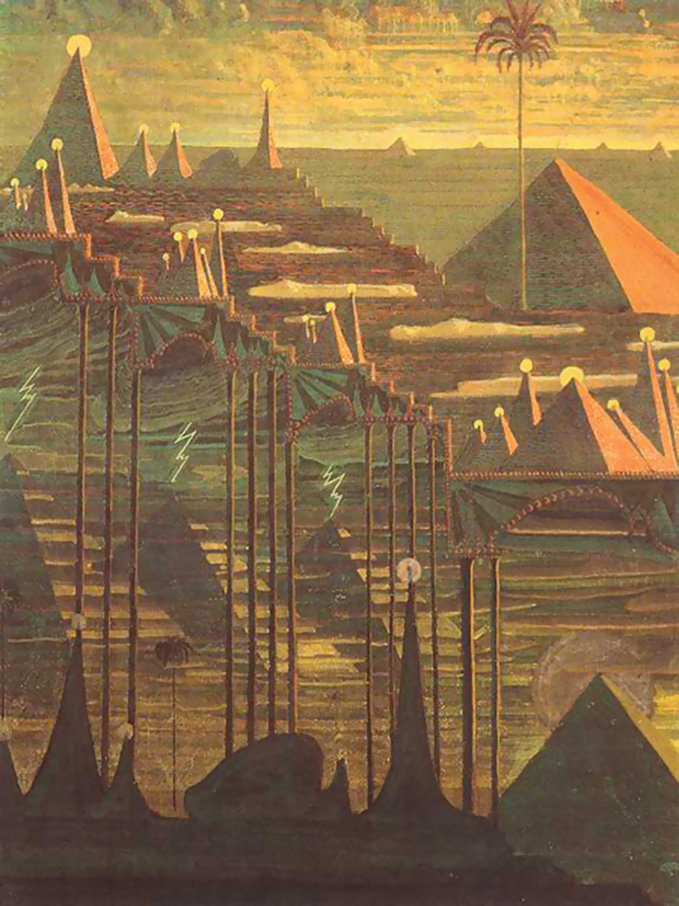INVITATION TO A VOYAGE
By:
February 19, 2025
A (pro- or anti-) science-, mathematics-, technology-, space-, apocalypse-, dehumanization-, disenchantment-, and/or future-oriented poem published during sf’s emergent Radium Age (c. 1900–1935). Research and selection by Joshua Glenn.

To Louis Bergerot
The trains! The trains hugged by the
tunnels
Have fashioned those pink cabarets
Where the gipsies go their way
The pink-waltz gipsies
Of the virginal bowling-green isles.
On automobiles
The fragile stock-holding ladies go by
Like mobile lotto bags
Toward parks with gentle shade
I invite you my dear Elise.
Elise! I invite you on a voyage
Toward those Venetian palaces.
To pick bough-covered flowers
We’ll park our bikes
In front of the hostile armor plates
Of the art nouveau grilles of iron.
We’ll park our machines
To decorate them with hawthorn
We’ll watch the water flow
As we sip cool mint drinks.
Maybe one day in our sixties
We’ll go down these rivers
In scarlet automata
Which belong to us!
But in those too long futures
Won’t the Panhard horses
Have become air-borne?
For sale: four authentic deserts
Near the railroad,
Contact the owner-notary
M. Chocarneau
18, Boulevard Carnot.
— A 1903 poem that evokes and rejects the luxe, calme, et volupté of Baudelaire’s poem of the same title. In Rosanna Warren’s Max Jacob: A Life in Art and Letters, we read:
Years before Picasso and Braque incorporated fragments of newspapers into their paintings, Jacob recognized the flotsam and jetsam of public language as material for poetry. He recognized, also, the value of distorting convention: the deliberately clumsy rhymes and syllable counts mock nineteenth-century mellifluousness as the poem’s modern modes of transport — trains, cars, bicycles, flying machines — mock Romantic and Symbolist tropical seascapes and drunken boats.
Translation from the 1995 book The Cubist Poets in Paris.
PS: The système Panhard put an automobile’s engine in front under a hood, driving the rear wheels through a sliding gear transmission. Without shafts reaching forward to the horse, a short-wheelbase vehicle was twitchy and unstable, especially with high seating. The Panhard’s layout ultimately solved these problems by allowing cars to be built longer and lower, a trend that accelerated after 1900.
RADIUM AGE PROTO-SF POETRY: Stephen Spender’s THE PYLONS | George Sterling’s THE TESTIMONY OF THE SUNS | Archibald MacLeish’s EINSTEIN | Thomas Thornely’s THE ATOM | C.S. Lewis’s DYMER | Stephen Vincent Benét’s METROPOLITAN NIGHTMARE | Robert Frost’s FIRE AND ICE | Aldous Huxley’s FIFTH PHILOSOPHER’S SONG | Sara Teasdale’s “THERE WILL COME SOFT RAINS” | Edith Södergran’s ON FOOT I HAD TO… | Robert Graves’s WELSH INCIDENT | Nancy Cunard’s ZEPPELINS | D.H. Lawrence’s WELLSIAN FUTURES | & many more.
